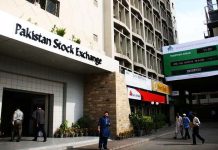DM Monitoring
NEW YORK: Bank of America Corp’s BAC.N strategists cut their year-end forecasts for the S&P 500 index twice this year, trailing the U.S. stock market as it plummeted in a coronavirus-induced panic. Then, as the market rallied past those revised targets in the ensuing months, the strategists followed by increasing their estimates.
They currently are forecasting that the S&P 500 will end the year at 3,250 – a level that is just 50 points below what they had been predicting in January. But the index could end up somewhere between 2,200 and 4,000, depending on the course of the virus and the economy, wrote Subramanian and colleagues in a Sept. 3 note.
The S&P 500 on Wednesday closed at around 3,360, which is around 4% higher than where it started the year.
The business of forecasting markets is fraught in the best of times. But the year 2020 has left many Wall Street strategists scrambling to make sense of the market, with forecasters surprised by the spectacular crash in late February and March and subsequent rally, according to their research notes and interviews.
As the coronavirus spread early this year, Wall Street researchers generally did not anticipate the scale of the disruption it would cause, according to data from market information provider Refinitiv and a Reuters review of S&P 500 earnings and price forecasts by the six largest U.S. banks by assets. That left them chasing the market decline with cuts in their S&P 500 earnings-per-share forecasts or price targets — or both. When the downturn in the S&P 500 reversed in late March, several strategists struggled to predict how far and long the rally could go, the review shows.
In a June email to Reuters, Subramanian defended her team’s record and highlighted the unprecedented nature of the crisis. “It is precisely during moments of uncertainty that we should strive to provide investors with our best guess as well as a range of scenarios around that framework,” she wrote. She did not respond to requests for further comment last week. Bank of America declined to comment for this article. Of the other five largest banks, JPMorgan Chase & Co JPM.N, Citigroup Inc C.N, Morgan Stanley MS.N and Wells Fargo & Co WFC.N also declined.
Goldman Sachs Group Inc GS.N, in a response to Reuters in May, said its forecasts are made with the best information it has available at the time and that it noted in research early in the year that a significant change in circumstances relating to coronavirus would alter its forecasts. In response to additional questions from Reuters in late September, the bank declined further comment.
“THEY MISSED IT”
The market’s rebound this year comes as the economy and public health continue to feel the devastating effects of the pandemic. The resulting disconnect between Wall Street and Main Street has investors trying to understand market behavior.
Wall Street research has long been a staple input in investment theses for all stripes of investors, but some say they are relying less on it now. Rob Christian, co-head of research and investment management at Franklin Templeton’s hedge fund solutions group K2 Advisors, said while he pays attention to sell-side research, his group is putting “less weight on it as there are so many unknowns.”“In general, they missed it as a group,” Christian said, referring to the pandemic. “We think it is really hard to predict anything now.”
Some of the strategists’ predictions have proved to be correct. JPMorgan’s chief U.S. equity strategist Dubravko Lakos-Bujas, for example, did not cut his initial year-end S&P 500 target of 3,400 during the crash, arguing that the selloff was temporary and policy response would outlast the impact of COVID-19. The target was raised to 3,600 on September 11.
But he also argued in a Feb. 27 research note that the pandemic would have “one-time earnings hits for companies.” Between then and Sept. 11, he reduced his 2020 S&P 500 earnings per share estimate to $136 from $174.





